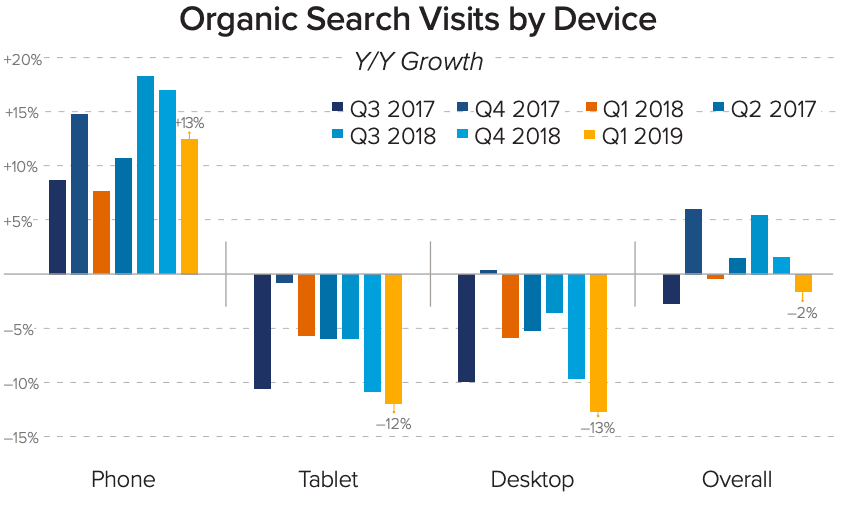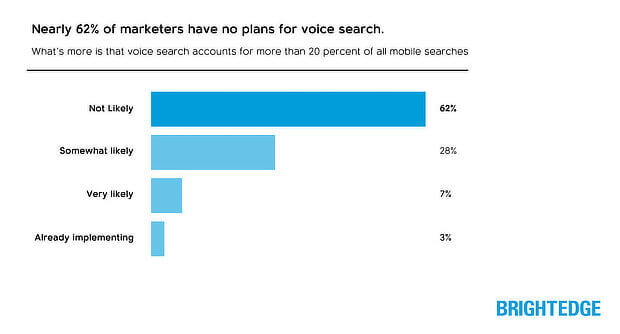preface :
This Is Second Version on 2019 last update: Mar 31, 2019 @ 11:22Based on our experience of different mobile SEO against desktop projects, we had been created a detailed guide on mobile SEO. but I hope it will help newcomers to mobile SEO missing some of the key issues. But in this article we want to talk about:
- What mobile SEO is?
- Why mobile SEO is important?
- What do you need to do to optimize your website?
- What is AMP?
Below we will spend time offering my recommendations to boost your understanding of how to prepare properly to optimize your website for optimal user experiences across all mobile devices.
First and foremost, according to Google mobile websites typically run on one out of three different configurations:
- 1. Responsive Web Design
- 2. Dynamic Serving
- 3. Separate URLs
So follow us carefully and with the high precision to received new concepts about Mobile SEO against the desktop.
What Is Mobile SEO?
Google recently started unrolling a feature that will inform Internet users whether the site they are about to open is mobile-friendly, Search Engine Land noted. This move will likely encourage mobile-users to click on sites that are labeled “mobile-friendly”, and give these websites a further boost on results pages.
Mobile SEO is the practice of optimizing your website for users on smartphones and tablets. Mobile optimization also includes making your site resources accessible to search engine spiders. It’s the practice of optimizing your content to achieve a better ranking for your web pages in search engine results pages (SERPs).
This process helps you improve organic traffic, which is traffic coming to your site from search results.
While there are several search engines, when it comes to mobile SEO, Google is the most important one. That’s because it accounts for almost 95% of the mobile search market.
Mobile SEO against desktop
All the techniques used for traditional SEO or desktop will work for mobile SEO, but this is not the case.in this post we want to describe Mobile SEO against desktop: we believe that Mobile SEO against desktop have Different results, different content strategies

They are two distinct and distinct entities, and they must be treated as such. Mobile SEO remains SEO, but it is very specialized. Mobile SEO differs from traditional SEO in three ways and allows you to optimize mobile search.
• Search Behavior
Mobile searchers use their mobile devices to search at different times from desktop and generally have different contexts for their search. Mobile search is for people on the move. They no longer access their home screen and no longer enter their search. This completely changes their search intent and context.
• Commitment Commitment
makes a huge difference between a mobile user and an office user. While a mobile search engine is going to be very involved, they are not interested in scrolling search results. They are on the move – they need their information quickly. They will not search the results pages to find an answer. Therefore, being in the first place is even more desirable in mobile SEO than in desktop SEO.
• Ranking algorithm
The biggest difference between desktop and mobile SEO: they use different ranking algorithms. Why does Google find the need for completely separate algorithms? Because they have provided an even better mobile user experience. Google has stated that it is committed to providing mobile users with the same, if not better, the experience they offer their users.
In fact, how could they do this without making major changes to their algorithm?
The location was one of the main factors that changed the mobile. 1.7 Conclusion The search engine is a really useful tool in the current era of the Web.
There are many search engines on the market, but the most popular search engine is Google. So, to get the best results on the web, we have to use the search engine optimization technique. On-page and off-page search engine optimization techniques are important for better search results. Of the three types of SEO, the White Hat SEO technique is also the best long-term solution.
The process involves a search engine uploading a page and storing it on its own server, where a second program, called an indexer, retrieves various information on the page, such as the words it contains and their location, as well as any weight for specific words and all the links contained in the page, which are then placed in a planner for later analysis.
Website owners began to recognize the value of site visibility and visibility in search engine results, creating an opportunity for both SEO and white hat practitioners.

Why mobile SEO is important
mobile SEO is important when determining or re-writing content for your mobile website. To draw the attention of visitors to your content put searchable, SEO-friendly keywords in titles and headlines. You should also put sufficient space between sections so readers won’t get bogged down wading through pages packed with too much content.
In short: the number of mobile searches is EXPLODING.
In fact, 57% of all searches on Google in 2016 related to mobile search. and in 2019 this statistic increases by 20%.



we categorize the most important we issue as below :
1. Mobile Search Is on the Rise
First of all, it’s about the market trend. For a while now, mobile searches have exceeded desktop searches, and that’s only likely to continue.
That means that many of your target customers are likely using mobile devices to find your content. Improving mobile SEO means they’ll be able to do that.
2. Mobile Content Determines Google Search Ranking
Plus, Google’s switched to a mobile-first index, which means it’s using the mobile content of a web page to determine its search engine ranking. So if you aren’t looking after mobile SEO, you risk having poorly ranked content.
3. Mobile Search Drives Sales
Mobile is also driving presale searches. Google’s research shows that:
- Mobile searches for product reviews have increased by 35% over two years
- People have spent the equivalent of 50,000 years of watch time looking at video reviews
- Mobile searches including the word “best” have grown by 80% over two years
If people are looking to buy your products, you want to be sure that the right search terms lead them to your site.
In addition, 40% of people prefer to use mobile devices to complete the whole shopping process, from researching the product to buying it.
Overall, looking after mobile search optimization will help you reach your customers where they are and create a better user experience for all your visitors.
4. Mobile SEO Affects Voice Search
Mobile optimization will also help you future-proof your SEO strategy. That’s because voice search is becoming huge, mirroring the rise of mobile search.
These days, voice search isn’t just on smartphones and tablets, but on home assistant devices like Amazon’s Echo, which means people will be able to find well-optimized content from anywhere.
And, using mobile SEO to optimize for voice search now could provide a competitive advantage, as 62% of businesses aren’t doing this yet.

Of course, not all businesses get a lot of mobile traffic, so it makes sense to check yours before you get started.
Don’t get us wrong: the changes we mentioned mean you’ll have to handle mobile SEO at some point, but checking your traffic will tell you whether you needed to do this yesterday, or if you can wait a few weeks.
A short Checklist for Mobile-Friendly of Mobile Websites:
To build a successful marketing program you need effective online promotional tools. If you need a new website, then the first thing you should do is follow the essential steps to build one. But with mobile internet use continuing to rise, and surpassing desktop use (according to StatCounter), it’s become more important than ever to have a strong mobile presence. To reach more mobile customers, follow these steps to make their digital experience as mobile-friendly as possible.
1. Give Your Site a Mobile-Friendly Makeover
There’s nothing more frustrating for smartphone users than visiting a poorly formatted mobile website. For small businesses, this can lead to reduced sales if impatient customers decide to visit a competitor with a more mobile-friendly site. With more people accessing the internet through mobile devices, according to Marketingland.com, making your website mobile-friendly is more likely to keep customers on your page.
For more tips to determine if your site is mobile responsive in its current state, check out our demo in the near future in our new template.
2. Use Responsive Templates
As part of a responsive site design strategy, mobile site templates will allow you to more easily convert much of your website (content and format) from desktop to mobile. It’s also the best (and easiest) to use the same text and images for both desktop and mobile websites. From there, you can fine-tune the display on your mobile website for optimal viewing and navigation.
3. Make Sure It’s Readable
To make your mobile website easier to navigate and more attractive to visitors, keep it simple. Reduce the number of words, and give what’s there plenty of room. You don’t want potential customers to have to zoom in on text and scroll from left to right to read it all.
Choose larger font sizes, such as 14px, and break up larger text blocks into smaller bite-size paragraphs or bullet points. Because mobile screens are much smaller, clear and easy navigation is essential. Make it easy for visitors to pick out the information they’re searching for, with data that are readily available.
4. Include Basic Company Info
This may seem obvious, but it’s important your vital company details are easy to find and prominently displayed. This includes address, store hours, and contact information. Make your phone number clickable, so visitors can call without leaving the page. You should also include a Google map icon that allows customers to see your exact location.
5. Minimize Use of Photos and Plugins
You may be tempted to add lots of splashy pictures and plugins to your site, but keep them to a minimum as much as you can. While they may look attractive, they can lead to slow website loading speeds and the loss of potential customers who don’t want to wait.
What’s more, starting in July 2018, Google will begin using the loading speed of websites as a ranking factor for mobile searches. This means that the longer it takes for visitors to access your site, the lower your mobile SEO rank will be. To gauge how fast your website loads, run a speed test at Pingdom.com, which grades different aspects of your website to let you know what needs improving. If your site is grading out low, go through and take out all but the most essential pictures and plugins.
How to speed up your mobile site
The first and main important issue for improving your mobile SEO and also desktop is the speed loading of your site. There are some pretty simple fixes that will help speed up your site ready for the mobile-first index.in our blog, we have a special article about how to speed up your website and it’s better to follow this post
How to speed up your mobile site
What is AMP?
AMP is a Google-led initiative to speed up the web.
Google set up a protocol called “Accelerated Mobile Pages (AMP)“. These pages are separate pages you create, each one shadowing a regular page.
AMP is accelerated in two ways. First, they are stripped down to load faster, but not all elements will show. Second, Google caches them, so that they can be served up quicker to users in a search directly from Google’s server.
Accelerated Mobile Pages solves the mobile speed issue that regular responsive sites have.
AMP pages are served to visitors on different URLs from that of the main site as in .com/amp

The big benefit of using AMP is speed. As we have mentioned earlier Google wants the mobile experience to be fast and that is exactly what you get with AMP. And with speed, you get happier visitors more site dwell, more conversions, etc.
But with the benefits come some problems. Accelerated Mobile Pages are stripped-down versions of the original. They are more static and just don’t carry all the resources that normal responsive pages do.
Monetization of your site is impacted when using AMP. If you add Adsense ads to your site they are carried over to your mobile site if your theme is responsive (and most now are).
- With Accelerated Mobile Pages your ads are stripped out to keep your site fast.
- In fact, any cool feature that you add via a plugin that adds functionality is often stripped out.
- It is also suggested that AMP can hurt your link building efforts which as we know is important for SEO

conclusion
To most people, a “Mobile device” means a smartphone or tablet.
However, Google puts tablets “in their own class” and states: “When we speak of mobile devices, we generally do not include tablets in the definition”.
- In other words, according to Google: mobile=smartphones.
- Honestly, this shouldn’t impact your mobile SEO all that much.
- The main idea here is to optimize your site for ANY device.
- This includes phones, tablets… or anything else that Elon Musk invents in the future.
And do not forget the benefits of Mobile-friendly designs
Overall, when you invest in giving your website a makeover with any of the three mobile SEO configurations, you can look forward to:
- More website traffic
- Improved user experiences
- Higher conversion rates
- Increased time spent on your website
- Lower bounce rates
- Faster page loading times
- Competitive market advantages
- More customer engagement
- Improved search engine performance

